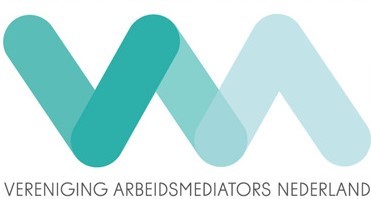Choosing mediation
Mediation is a procedure in which the parties endeavour to resolve their issue under the supervision of a mediator. Employment mediation or Labour mediation is mediation in labour and employment related matters. The mediator guides parties in expressing and discussing what keeps them divided and supports them in finding solutions.
Choosing a mediator *
If parties opt for mediation, the first step is choosing a mediator. Parties have to agree on the person of the mediator. Mediator is not a protected profession; in principle anybody can appoint himself or herself mediator and follow his or her own working method. However, parties can also choose a qualified mediator. The “MfN-register”(MfN stands for Mediatorsfederatie Nederland, the Netherlands Federation of Mediators). The MfN-register is the (only) independent non-profit quality register for mediators in the Netherlands. It is also the only quality register recognized by the “Raad voor Rechtsbijstand” (Dutch Council for Legal Aid) and the “Raad voor de Rechtspraak” (Dutch Council for Judiciary). A mediator with the quality label “MfN-registermediator” (title and logo) has proven experience and qualities and is obliged to maintain them. (https://mfnregister.nl).
The procedure
The working method of a registered mediator is transparent. He/she works on the basis of the MfN-mediation agreement and is subject to the MfN rules and Code of Conduct. A mediation procedure consists of the following steps.
Acquaintance/intake: in these (individual) meetings, parties have the opportunity to form an impression of the mediator and to talk about the (looming) problem. The mediator explains the concept of mediation, in particular its key values (voluntariness, confidentiality, commitment) and his/her role and position in the procedure (independent, impartial, conducting, monitoring progress). He/she maps out the points parties wish to resolve.
First session and signing of the mediation agreement: prior to or at the beginning of the first session, parties sign the mediation agreement. This agreement also contains other arrangements between the parties regarding hourly rate and the distribution of fees and costs. With the agreement signed, it is up to the parties to tell their side of the story under the guidance of the mediator. Parties experience this as the ‘real’ start of the mediation.
Following sessions: there is no prescribed number of following sessions. The quantity of sessions depends on the number of parties involved, the nature of the dispute and the parties’ attitude and abilities. It is the mediator’s task to monitor the progress of the procedure. He/she discusses this with the parties at the end of each session.
Discussing (possible) solutions: once parties have expressed themselves and the interests of each party have been made clear, the parties jointly and under guidance of the mediator examine possible solutions. Solutions that take accounts of the interests of both parties and that are practically feasible.
Agreements, Settlement Agreement (SA): if and when parties jointly reach a solution, the mediator in principle records the agreements in a so-called Settlement Agreement (SA), thus offering clarity and certainty about the parties’ commitments towards each other for the future.
In the event of parties agreeing on terminating their employment relationship (in practice also referred to as: ‘exit’ mediation) it is necessary to ensure that all agreements related thereto are recorded in an SA, so that both parties are aware of their rights and obligations.
In another situation, when it becomes apparent that trust between two colleagues with problems in their co-operation is restored during the mediation procedure, it is for the parties to declare whether or not they appreciate the recording thereof. In such cases, parties could feel that a written agreement would in fact negatively affect the renewed trust.
It therefore depends on the aim and outcome of a mediation whether or not an SA is possible, necessary or desirable.
End of the mediation
When the parties have reached a solution jointly and all agreements related thereto have been put in writing between them (and signed), the mediation shall formally end through a written statement from the mediator to the parties.
When parties, despite their efforts, do not succeed in reaching a jointly supported solution, the mediator ends the mediation. It is important to underline that the confidentiality and secrecy obligations of the parties under the mediation agreement remain intact after termination of the mediation. In the event that parties later on enter into legal proceedings against each other, they cannot invoke or build on anything expressed (orally or in writing) or presented in the completed mediation procedure. Parties shall not end up in a worse situation from a legal point of view as a result of the mediation; their positions are, as it were, reset.
* In complex cases, e.g. due to a large number of parties involved (group mediation), parties can opt for co-mediation: guidance by more than one mediator.





